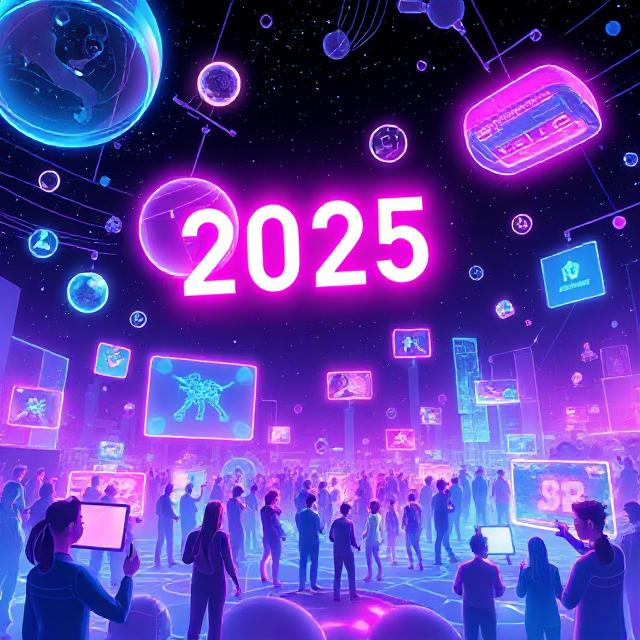The Future of Social Media: New Features and Trends Shaping 2025
As we stand on the precipice of March 20, 2025, the social media landscape is buzzing with innovation, driven by technological advancements, shifting user behaviors, and the relentless pursuit of engagement. Social media platforms are no longer just spaces for connection—they’ve evolved into dynamic ecosystems blending entertainment, commerce, and community-building. From AI-driven tools to decentralized networks and immersive virtual experiences, the features rolling out now and the trends anticipated for the remainder of 2025 promise to redefine how we interact online. This article explores what’s new on the market, the cutting-edge features being added to social media platforms, and the future directions that will shape this digital frontier.
- Instagram’s Enhanced Flexibility
Instagram has expanded its carousel feature, allowing users to share photos in their original aspect ratios. This move caters to creators who want more control over their visual storytelling, reducing the need for awkward cropping. Additionally, whispers of "Project Ray"—a standalone Reels app—are circulating on X, hinting at Instagram’s ambition to dominate longer-form video content with enhanced recommendation algorithms. - LinkedIn’s Video Revolution
Once a bastion of static professional updates, LinkedIn is embracing video in a big way. Users can now upload native videos directly into articles and newsletters, offering richer ways to share expertise. Meanwhile, a TikTok-inspired short-form video feed, tested since 2024, is gaining traction, with a potential full rollout looming in 2025. Even interactive elements like polls and games (yes, games!) are popping up, signaling LinkedIn’s shift toward a more engaging, Gen Z-friendly platform. - Threads’ Personalization Push
Threads, Meta’s text-based platform, is testing an "Interests" feature to surface content tailored to user preferences. This move aims to carve out a niche in the crowded social space by prioritizing discovery and topic-based engagement over follower counts. - X’s AI-Powered Advertising
X has introduced a Grok-powered ads interface, leveraging xAI’s technology to streamline ad creation, analyze performance, and suggest optimizations. This feature reflects X’s bid to retain advertisers amid evolving platform dynamics, offering a glimpse into AI’s growing role in social media monetization. - YouTube’s Community and Premium Perks
YouTube is expanding its Communities feature, enabling discussion boards for deeper fan interaction beyond comments. For Premium subscribers, new perks like enhanced audio, AI-generated radio stations, and picture-in-picture for Shorts on mobile are being tested, enhancing the platform’s value proposition.
- Decentralized Social Media Takes Root
Centralized platforms like Facebook and X have long dominated, but decentralized alternatives like Lens Protocol and DeSo are gaining momentum. Built on blockchain technology, these platforms let users own their content, monetize it via NFTs or tokens, and control their data. Posts on X highlight their growing appeal, with Lens Protocol focusing on NFT-based social graphs and DeSo fostering tokenized creator economies. Traditional platforms may respond by integrating Web3 elements—think tokenized rewards or user-owned profiles—to stay relevant. - The Metaverse Meets Social
The metaverse isn’t just a buzzword—it’s becoming a tangible extension of social media. Platforms like The Sandbox are blending social interaction with virtual worlds, where users engage with brands through NFTs and immersive campaigns. This trend could see Instagram or TikTok launching AR/VR hubs, allowing users to "step into" branded experiences or hang out in virtual spaces with friends. - AI as the Creative Core
Artificial intelligence is no longer a novelty—it’s a necessity. Instagram’s upcoming MovieGen tool, slated for 2025, will let users edit videos with text prompts, democratizing advanced content creation. X’s Grok-powered ads are just the beginning; expect AI to infiltrate search, curation, and even community moderation across platforms. AI-driven discovery, akin to Google’s AI Overview, could summarize trending topics or suggest content in real time, making platforms smarter and more intuitive. - Long-Form Video Makes a Comeback
While short-form video reigns supreme (TikTok’s 10-minute cap, YouTube Shorts’ 3-minute extension), a resurgence of longer-form content is brewing. Users crave depth alongside brevity, and platforms are responding. Instagram’s potential Reels app and YouTube’s Community features signal a shift toward richer storytelling, balancing quick hits with immersive narratives. - Niche Communities Thrive
The era of mass broadcasting is waning. Users are flocking to private, niche spaces—think Facebook Groups, Discord servers, or invite-only LinkedIn circles. Platforms may amplify this by enhancing community tools, like Threads’ Interests feature or YouTube’s Communities expansion. Brands will need to pivot from broad reach to deep engagement, fostering loyal micro-audiences. - Social Commerce Goes Mainstream
Shopping on social media is no longer a sideline—it’s a juggernaut. TikTok Shop, Instagram’s immersive checkout, and YouTube’s in-app purchases are streamlining the buyer journey. By 2025, expect AR try-ons (mirroring Google Shopping’s innovations) and AI-personalized product recommendations to make social platforms the go-to retail hubs, rivaling traditional e-commerce. - Interactive Tools Take Center Stage
Engagement is king, and platforms are leaning into interactivity. LinkedIn’s Tango game, Instagram’s collaborative posts, and TikTok’s live challenges are early indicators. In 2025, expect more polls, quizzes, and gamified features to keep users active, alongside automation tools like SocialFlow for seamless posting.


